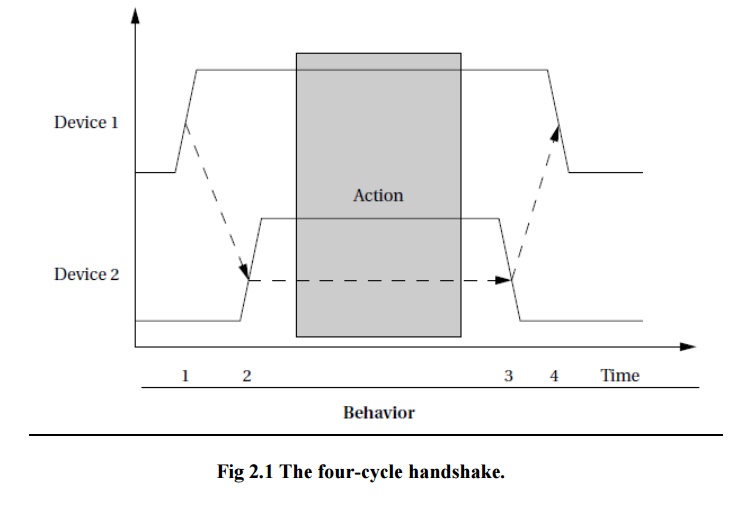Chapter: Embedded and Real Time Systems : Computing Platform and Design Analysis
CPU Buses
CPU
BUSES:
A
computer system encompasses much more than the CPU;it also includes memory and
I/O devices. The bus is the mechanism by which the CPU communicates with memory
and devices. A bus is, at a minimum, a collection of wires, but the bus also
defines a protocol by which the CPU, memory, and devices communicate. One of
the major roles of the bus is to provide an interface to memory. (Of course,
I/O devices also connect to the bus.)
1. Bus
Protocols:
The basic
building block of most bus protocols is the four-cycle handshake,
illustrated in Figure 2.1. The handshake ensures that when two devices want to
communicate, one is ready to transmit and the other is ready to receive.
The
handshake uses a pair of wires dedicated to the handshake: enq (meaning enquiry) and
ack
(meaning acknowledge). Extra wires are used for the data transmitted during the
handshake. The four cycles are described below.
Device 1 raises
its output to signal an enquiry, which tells
device 2 that it should get ready to listen for data.
When device 2
is ready to receive, it raises its output to signal an acknowledgment. At this
point, devices 1 and 2 can transmit or receive.
Once the data transfer is complete, device 2 lowers its output, signaling
that it has received the data.
After seeing that ack has been released, device
1 lowers its output.
At the
end of the handshake, both handshaking signals are low, just as they were at
the start of the handshake. The system has thus returned to its original state
in readiness for another handshake-enabled data transfer.
Microprocessor
buses build on the handshake for communication between the CPU and other system
components. The term bus is used in
two ways.
The most
basic use is as a set of related wires, such as address wires. However, the
term may also mean a protocol for communicating between components.
To avoid
confusion, we will use the term bundle to refer to a set of related
signals. The fundamental bus operations are reading and writing. Figure 2.2
shows the structure of a typical bus that supports reads and writes.
The major
components follow:
Clock provides synchronization to the
bus components,
R/W is true when the bus is reading
and false when the bus is writing,
Address is an a-bit bundle of signals that transmits the address for an access,
Data is an n-bit bundle of signals that can carry data to or from the CPU,
and
Data ready signals when the values on the
data bundle are valid.



2. DMA:
Standard bus transactions require the CPU to be in
the middle of every read and write transaction. However, there are certain
types of data transfers in which the CPU does not need to be involved.
For
example, a high-speed I/O device may want to transfer a block of data into
memory. While it is possible to write a program that alternately reads the
device and writes to memory, it would be faster to eliminate the CPU’s
involvement and let the device and memory communicate directly. This capability
requires that some unit other than the CPU be able to control operations on the
bus.

Direct
memory access (DMA) is a bus operation that allows reads and writes not
controlled by the CPU. A DMA transfer is controlled by a DMA
controller, which requests control of the bus from the CPU.
After
gaining control, the DMA controller performs read and write operations directly
between devices and memory. Figure 2.3 shows the configuration of a bus with a
DMA controller. The DMA requires the CPU to provide two additional bus signals:
The bus
request is an input to the CPU through which DMA controllers ask for
ownership of the bus.
The bus
grant signals that the bus has been granted to the DMA controller.
A device
that can initiate its own bus transfer is known as a bus master. Devices that
do not have the capability to be bus masters do not need to connect
to a bus request and bus grant.
The DMA
controller uses these two signals to gain control of the bus using a classic
four-cycle handshake. The bus request is asserted by the DMA controller when it
wants to control the bus, and the bus grant is asserted by the CPU when the bus
is ready.
The CPU
will finish all pending bus transactions before granting control of the bus to
the DMA controller. When it does grant control, it stops driving the other bus
signals: R/W, address, and so on. Upon becoming bus master, the DMA controller
has control of all bus signals (except, of course, for bus request and bus
grant).
Related Topics